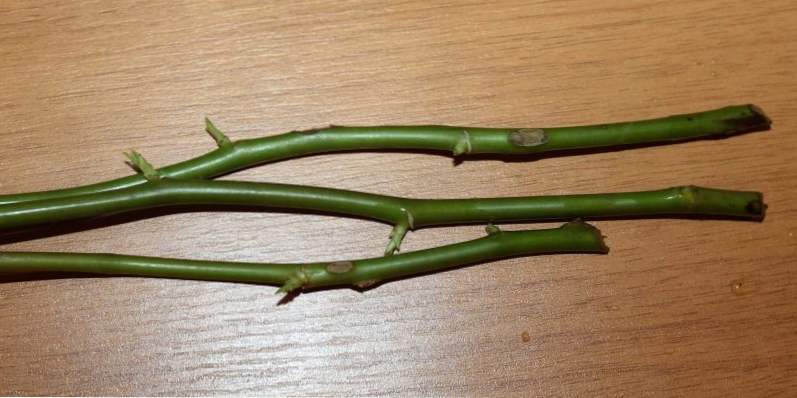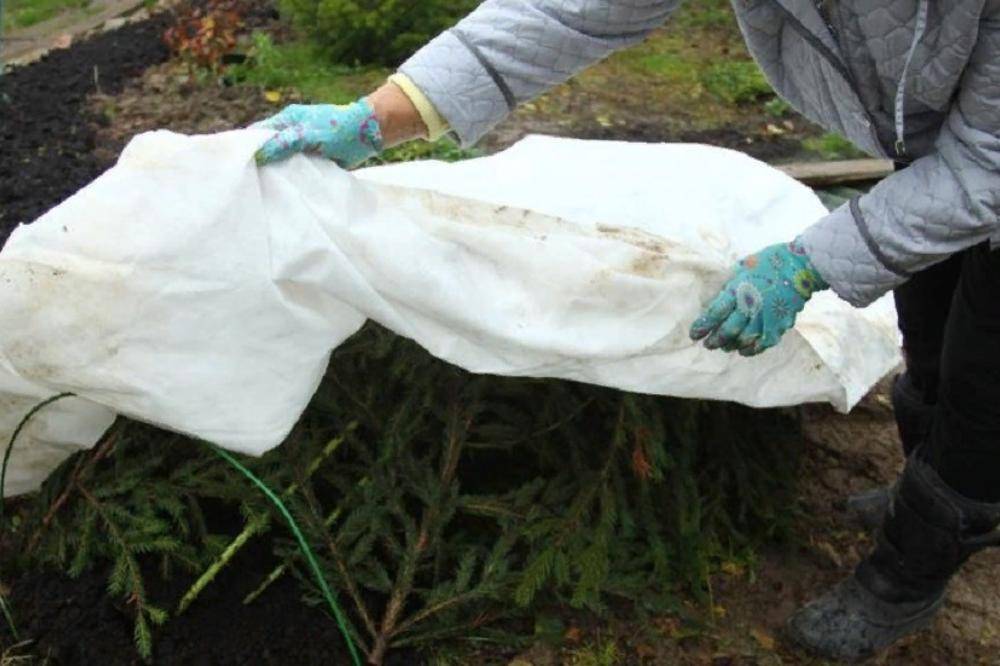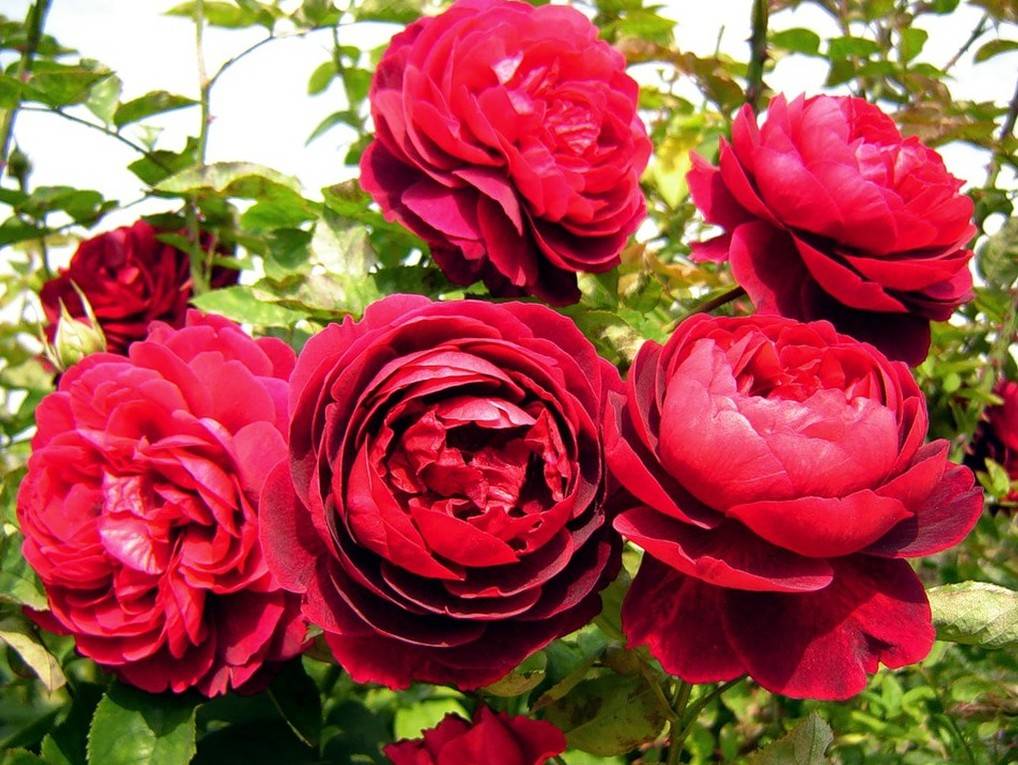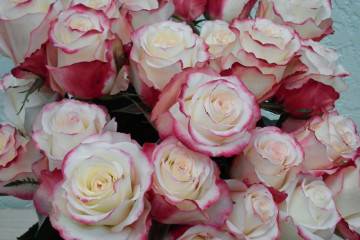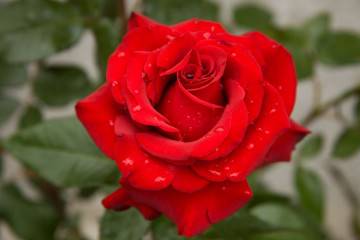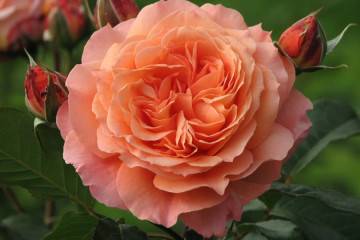Rose L D Braithwaite - characteristics of the bush
Content:
The Leonard Dudley Braithwaite rose is a new variety that is characterized by continuous flowering. It was bred in England by the famous breeder David Austin. Among the spray roses, this variety is the most densely doubled. During flowering, bright burgundy flowers with a rich aroma are formed.
Rose Al D. Braithwaite or Brightwaite (Leonard Dudley D Braithwaite): a brief description and characteristics
Rose L D Braithwaite has won numerous world awards. This plant is able to decorate any garden, and subject to the rules of agricultural technology, flowering will be lush throughout the growing season.
The bushes are quite low, rarely their height exceeds 120 cm, but in diameter they reach more than 120 cm. The shoots are strong and erect, do not bend under the weight of the inflorescences. During flowering, a bud of a rich bright red color is formed, and when it is fully opened, the petals turn dark cherry. This variety, among other English, is considered the brightest.
The flowers are large, at least 10 cm in diameter. Their shape is peony, each flower consists of about 80 petals. The variety is resistant to precipitation, the indicators of frost resistance are average - no more than -21 degrees.
Advantages and disadvantages of the variety
Rose Brightwhite LD has become widespread due to a large number of advantageous features. Main advantages:
- Excellent indicators of resistance to atmospheric precipitation, flowers and leaves are not subject to decay.
- High decorative properties.
- Unusual shape of a large flower of bright color.
- Intense and pleasant aroma.
As for the disadvantages, growers note flowers of different sizes on the bush. The variety is susceptible to black spot infestation, and also does not tolerate high temperatures. On one more shoot, several buds can form at the same time, which makes the rose unsuitable for cutting and further sale.
Use in landscape design
Due to its unpretentious cultivation and excellent decorative properties, this variety is universal in landscape design. Most often, designers plant bushes to create mixborders and compositions, to decorate garden paths, French-style flower beds and to organize hedges.
Growing a flower, how to plant it in open ground
It is possible to grow this beauty on your personal plot only if you purchase high-quality planting material. You can buy it in floriculture companies straight from the nursery of D. Austin.
When choosing planting material, it is better to turn your attention to a seedling with an open type of root system, as well as 2-3 green cuttings and a root collar of 8-10 cm in size. There should be no plaque on the sections.
The most suitable time for planting a plant in open ground is mid-September-late October. This is due to the fact that the sap flow begins to slow down and all the forces of the plant are aimed at strengthening and building the root system.
The planting site must be approached thoroughly, since the bush grows in one place for about 10 years. The site should be illuminated and protected from gusts of wind, partial shade conditions are allowed.
Planting algorithm:
- In the selected area, holes are dug 60x45 cm in size, with group plantings, an interval between plants of about 1 meter is maintained.
- A drainage layer is laid on the bottom of the hole, then fertilizers and, finally, a soil mixture.
- A seedling is lowered into the recess, its root system must be carefully straightened. The border of the stock should be approximately 7-10 cm below ground level.
- The entire cavity is covered with earth and finally compacted a little.
Plant care
Much depends on the correct planting, but if the plant is not regularly and efficiently looked after, it will quickly fade. From the first days after planting the seedling, you need to carefully monitor the moisture content of the soil and, as necessary, loosen the near-stem circle to retain moisture at the rhizome. It is imperative to regularly remove weeds that have a detrimental effect on the development of the bush.
Complex mineral and organic fertilizers are used for seedlings that are more than a year old. To fully provide the plant with nutrients, complex fertilizers must be applied. Ostinks are fed at intervals of 3-4 weeks. The last feeding is carried out in late August-early September with potassium-phosphorus compositions.
All ostinka have good indicators of frost resistance, but in severe frosts, the bush can still die. To prevent this from happening, the plant must be covered for the winter. Sawdust and / or earth are predominantly used as shelter. The height of the hill above the rhizome should be at least 15 cm. It is recommended to start hiding in the second half of October.
Blooming rose
The rose blooms early enough. As a rule, in good weather conditions, the first wave of flowers fades in the second half of June. The second wave begins to bloom in July and continues to form buds until mid-autumn. The state of dormancy, when sap flow stops in the bushes, occurs with the arrival of the first frost.
If the plant does not bloom for a long time, then the reason may be too deep planting of the seedling. It is quite possible that wild growth began to grow from the root system of the cuttings. The reason that the plant does not bloom can also be improper wintering, excessively dense and heavy soil, deficiency or excess of nutrients.
Flower propagation
All ostinki reproduce in three ways - by cuttings, grafting and dividing the bush. The most common way is the first. The most favorable time for reproduction is early summer, when the plant is in the flowering stage.
Diseases, pests and ways to control them
Rose L D Braithwaite, despite her good health, if the rules of agricultural technology are not followed or when weather conditions worsen, she can get sick with powdery mildew or black spot.
To prevent the development of diseases, Brightwaite is regularly irrigated with special insecticidal solutions. The first treatment is carried out shortly after the first leaves appear on the bushes, the next preventive treatment is in May or June. It is necessary to carry out the procedure on a dry day, since the active composition must remain on the leaves, buds and stems for at least five subsequent hours.
The Braithwaite rose variety is a true work of art from talented English breeders. It is possible to grow it not only for experienced flower growers, but also for beginners, since the plant is unpretentious in care and does not require much attention.


